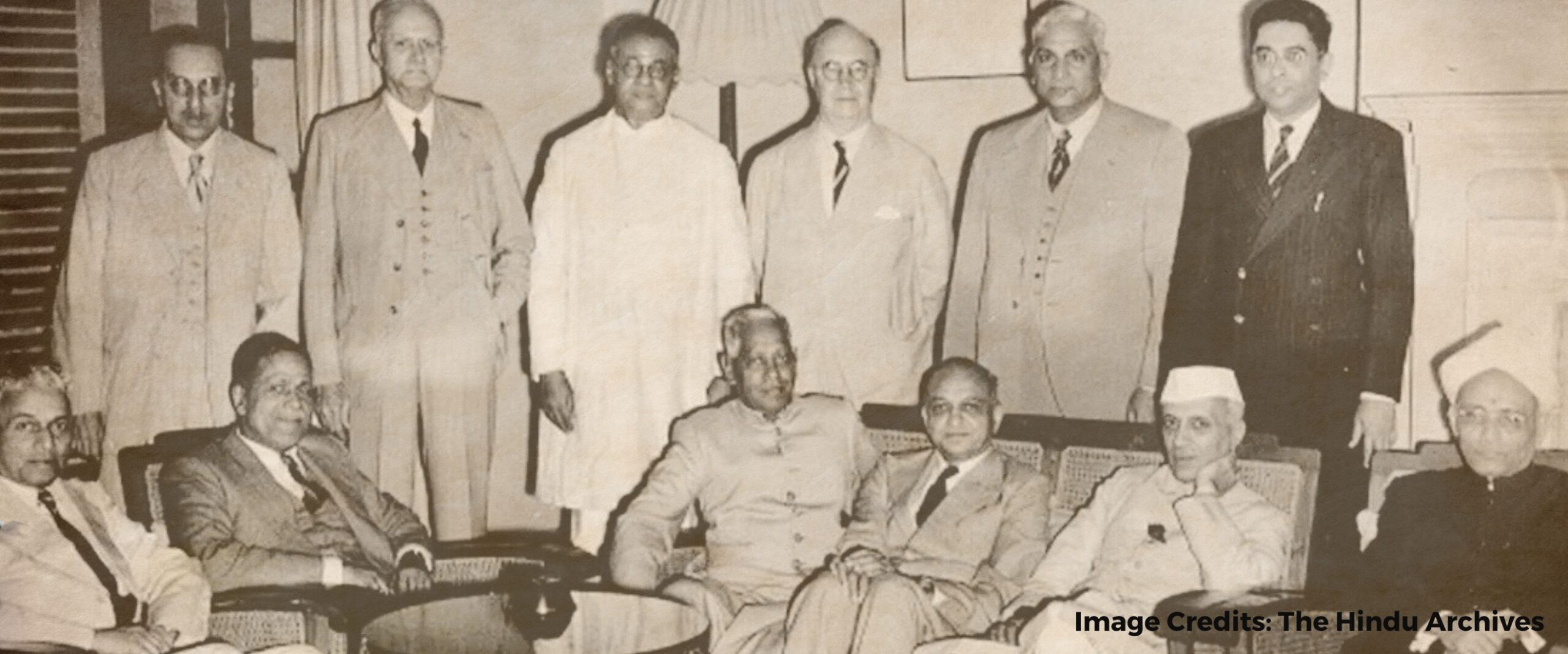Analysis
A gathering of judges
To commemorate India’s 75th Law Day on 26 November, we recall a historic conference of Federal and High Court judges in March 1948

Tuesday will mark 75 years since the Constitution of India was adopted by the Constituent Assembly. This desk brief is about an unprecedented event in the summer of 1948. Judges from across the country gathered in Delhi to discuss issues concerning the judiciary in the work-in-progress Constitution.
The story starts when B.N. Rau, advisor to the Assembly, met Sir John Beaumont, former Chief Justice of the Bombay High Court, in London. Rau was on a world tour, meeting judicial dignitaries to take back learnings to the framers. Beaumont suggested increasing the retirement age of High Court judges to 65, the same as Supreme Court judges, in the next draft of the Constitution. The suggestion made the second draft but there were cascading effects. Scholar Abhinav Chandrachud suggests that Rau’s push for increasing the retirement age for High Court judges precipitated the massive gathering of Federal and High Court judges in March 1948.
At the time, the general sense was that High Court judges weren’t really angling for elevations to the top court, given its uncertain future and unenviable task. It was more prestigious to be a senior judge in a storied High Court. But the memorandum signed by the judges at the gathering put paid to this notion—they asked for there to be a “difference of 3 to 5 years” in the retiring age so that the top court could have more experienced judges and inspire confidence.
There was another issue, far stickier even today, that the gathering discussed. When the second draft had been published for public comments earlier that year, Ram Lall, Chief Justice of the East Punjab High Court, had written a scathing note to Prime Minister Jawaharlal Nehru, pointing out the draft’s “glaring defects which had the potential of incalculable mischief.” Tipped off by Nehru, the Constituent Assembly Secretariat circulated the draft to High Courts across the country. Historian Rohit De notes that “close to a hundred high court judges” wrote in. The chief concern was around appointments.
In the conference memorandum, the judges demanded that the Chief Justice of India not merely be “consulted” for appointments, but that his recommendation be binding on the executive. De writes about it as a watershed moment, for it was the first time that the Indian judiciary was framing a collective identity. Before this, it derived its credibility from the fact that it was the institution most populated by Indians in a colonial set-up. But, in the years between independence and the Constitution’s adoption, it developed a self-image as the only institution to guard against executive excess.
The memorandum reached the floor of the Constituent Assembly, where it annoyed Home Minister Vallabhbhai Patel. He took issue with the claim that the executive’s decisions on appointment were communally tinged. In later years, there would be a twist to this tale. Patel’s mediation of the conflict on appointments between Justice Kania, India’s first Chief Justice, and Nehru would reveal that even the judiciary could be the source of communal bias.
Ultimately, the suggestion for the age gap in retirement between SC and HC judges made it to the Constitution. Some others did not. The CJI’s consultation on appointments, for instance, was not made binding. But the demand didn’t disappear. In fact, it exists in a substantial way in the form of the Collegium system, which was born as a result of the First, Second and Third Judges cases in the 1980s and 1990s. Incrementally, through its own pronouncements, the judiciary reclaimed its role in appointments and moved closer to fulfilling its oldest collective aspiration.
But the friction is by no means settled. In recent years, despite judges pronouncing that the Collegium’s decisions have to be “followed to the T” by the executive, recommendations and reiterations have been ignored. As my colleague Advay and I reported recently, 15.4 percent of proposals for the elevation of judges to High Court during CJI Chandrachud’s two-year tenure were not cleared.
The 1948 conference may not have succeeded in having all its concerns about executive pushback addressed, but it did contribute materially to filling in the gaps in our Constitution. The ongoing and lively debate on appointments is a reminder that Justice Kania’s aspiration of a judiciary “aloof from party politics” and “unconcerned with changes in government” is as relevant in the Constitution’s 75th year as it was in its first.
This article was first featured in SCO’s Weekly newsletter. Sign up now!